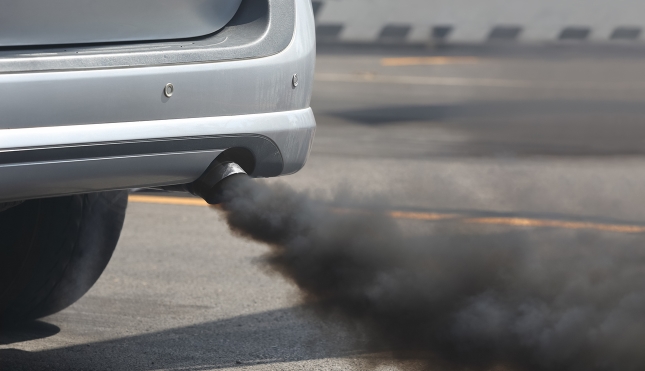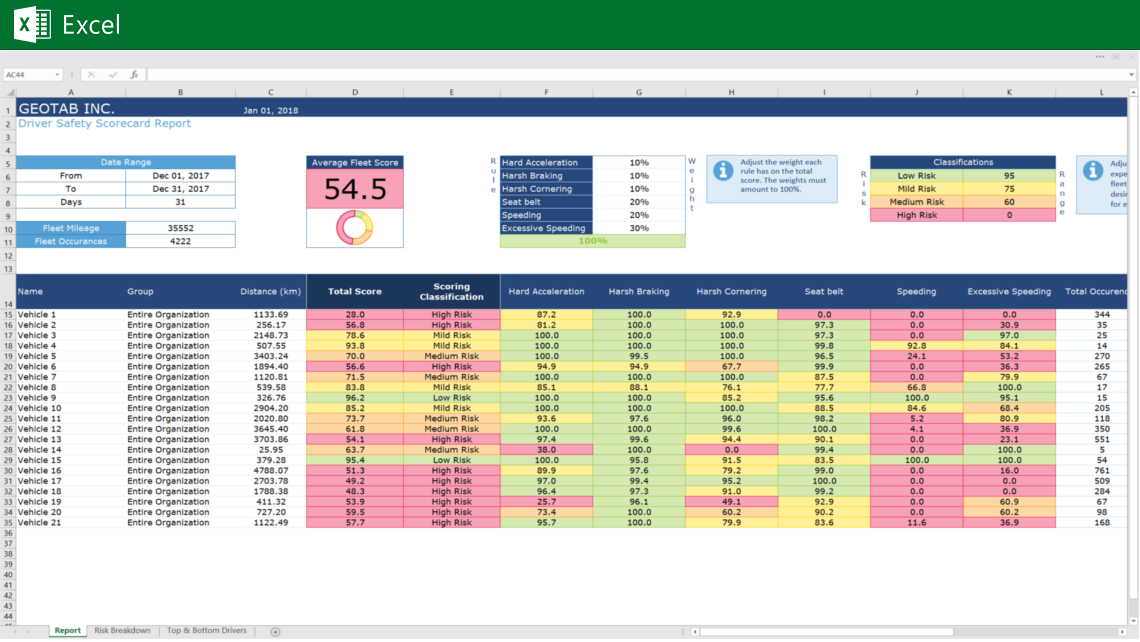3 ways to save money with fleet safety management
Save money by running a safer fleet. Learn about three areas of fleet safety management that can help your company’s bottom line.
By Geotab
Apr 27, 2018
Updated: Apr 24, 2023

Nothing is more important than the safety of your fleet. But did you know that running a safe fleet can also save you money? Ensuring that your drivers follow company policies, obey the laws, and avoid idling can drive productivity and maximize profit.
Here are at least three areas of fleet safety management that impact your company’s bottom line.
See also: Four best practices for fleet safety leaders
1. Enforce seat belt use
The best way to prevent and even avoid injury altogether while driving a motor vehicle is to always wear a seat belt. Failing to buckle up can be life-threatening and costly for everyone involved in the case of an accident. The CDC Foundation reports that in the U.S. in 2013, the cost of motor vehicles crashes for employers totalled $25 billion, that being $671,000 per death and $65,000 per non-fatal injury.

Telematics can help monitor seat belt usage. Fleet managers and supervisors may be surprised to find how often their drivers aren’t wearing a seat belt. According to the most recent seat belt survey data from the FMCSA, about 85 percent of commercial drivers regularly wear a seat belt.
But the most startling statistic is how much seat belt use, or lack thereof, can affect the cost of an accident. In its 2015 report, the Network of Employers for Traffic Safety (NETS) stated that not wearing a seat belt cost employers $4.9 billion in relation to accidents.
To help reduce incidents, telematics can send alerts to managers and/or drivers when drivers aren’t wearing a seat belt, the rules of which can be customized by the fleet (such as only if it’s in certain areas, i.e. geofences, or at certain speeds).
Read more here about seat belt reports from MyGeotab.
2. Reduce speeding with training and rules
In 2015, more than 9,500 people died in crashes involving speeding, according to NHTSA. And, according to NETS, speeding was the top driver behavior that caused accidents in commercial fleets, costing a total of $8.4 billion in accidents in 2015.

Unfortunately, many drivers still speed despite the risks. A study conducted by the American Automobile Association (AAA) discovered that “46.1% of drivers said they had driven 15 mph over the speed limit on a freeway in [March 2016], and more than 20% said it’s acceptable to do so.”
Don’t let these statistics lead your fleet to accidents and injuries on the job.
Eliminate the need to speed by:
- Leaving Early — Avoid waiting until the last minute to finish a route, work efficiently and manage time effectively.
- Checking Your Speedometer – Ensure you obey traffic laws, avoid congested roads when possible, and continue to stay within the speed limit.
- Answering Questions Proactively — What is expected of your team; what, if any, leeway is provided; and what are the deadlines each driver needs to meet?
How telematics can help: Same as speeding, telematics can provide alerts when drivers are clocking in above preferred speeds, whether surpassing the posted legal limit or a speed set by the fleet.
Read more here about how telematics can help you reduce speeding with your drivers.
3. Cut down on fleet idling
Excessive idling is equivalent to throwing thousands of dollars down the drain annually, and even monthly in some cases. A few minutes here and there is of course going to occur, especially in areas of extreme weather and/or companies with short service stops, but the following is likely to make you think twice on how much your drivers are idling.

First, it’s best to know how idling is calculated in the Trips History page to determine how to run a report based off this information in your Geotab database.
Now let’s consider the following scenario:
- For 1 hour you spend idling, you are wasting 1 gallon of gas.
- If a fleet of 100 vehicles has drivers idling 20 minutes a day, over the course of 1 month this behavior results in 833.33 idling hours.
- Over the course of 1 month, allowing drivers to idle 1-5 minutes at each stop has now cost you between $2,083 ($2.50/gallon) – $2,917 ($3.50/gallon).
- The solution is simple, but only if you are aware of the fuel you are consuming by letting drivers idle.
To minimize idling within your fleet, you can associate/disassociate a driver to a vehicle using the DriverChange section in your Geotab database or with the use of NFC tags (learn more about the importance of driver safety through the use of NFC tags/FOBs).
Telematics can also set alerts and ranks drivers by idle time. By actively working with drivers and their idling habits or misconceptions about idling, you can seriously reduce fuel costs.
Read more here about how you can use telematics to reduce idling.
Set clear safety policies and procedures
The key to making gains in safety is to establish clear and concise guidelines that employees can follow. The next step is to ensure that policies and procedures are enforced.
Having a fleet safety policy that is read and signed by drivers, and enforced by management can go a long way when it comes to taking action on risky behaviors. A policy should go hand in hand with why and how a telematics solution and its data are used.
See Also: Telematics Pros Share Best Practices for Driver Safety
Customize your fleet safety reports
To maximize safety management, reports and add-ons available in the Geotab Marketplace can help provide an efficient and easy way to learn about your drivers and keep your fleet in compliance and policies followed — all while receiving periodic reports on their driving behaviors.
There are numerous customized reports that can accommodate all your safety needs to observe, maintain and even prevent potential hazards, accidents or unsuitable road behavior.
One easily identifiable method is utilizing your driver safety scorecard (shown below) to maintain visibility on drivers who need more training, drivers who deserve incentives, and even drivers who’re costing the company time, money and risk by being on the road.

Download your driver scorecard here.
Vehicle and driver safety not only keep our roads safe from harm and potential danger, but it allows for increased productivity and cost management. So keep the roads safe, and you’ll keep money in your pocket.
Related:
Subscribe to get industry tips and insights
Geotab
Geotab team
Table of Contents
Subscribe to get industry tips and insights
Related posts

9 strategies to increase fleet fuel efficiency and lower fuel costs
July 8, 2025
4 minute read

Creating a fleet safety culture that’s built to last: Lessons from Missouri DOT and NYC
July 7, 2025
8 minute read


The fleet safety incentive program checklist for driver engagement that lasts
June 19, 2025
2 minute read

Building a self-sustaining school bus driver safety program with Geotab Vitality
June 13, 2025
7 minute read
